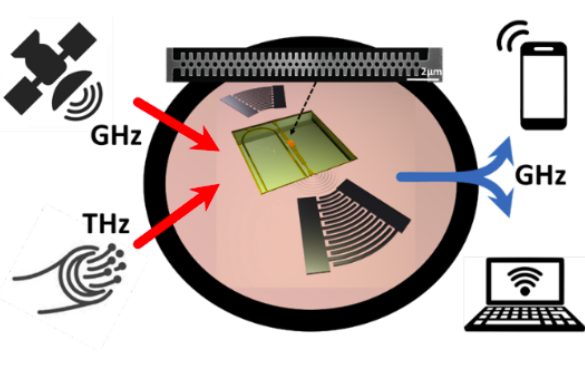THE MAGNIFIC PROJECT

Nano-opto-electro-mechanics (NOEMS) is an emerging field with unparalleled prospects for the design of efficient and low-power devices for ICT. However, to capitalize NOEMS potential, a flexible and up-scalable technology platform must be established, preferably based on current microelectronic technology.
MAGNIFIC aims at filling this gap focusing on nanocrystalline silicon (nc-Si), only recently used in NOEMS with very promising results, and its integration with columnar
aluminium nitride. Indeed, while nc-Si is widely used in MEMS production, the dynamics of such anoptically and electrically active nanocrystalline material has barely been investigated, leaving fundamental gaps in the understanding of the interplay between electrons, phoTons and phoNons.
In this context, we propose an up-scalable, cost efficient, room temperature and Si-compatible nano-opto-electro-mechanical platform for powering efficient communications technologies. The key challenge is to achieve a comprehensive understanding of the static and dynamic material properties and their interdependence. In particular, understanding the role of nano-crystallites and grain boundaries in absorption and in dissipation mechanisms at the nanoscale is crucial for energy efficiency and for reliable performance as they are intrinsically linked to losses and variability.
The aimed platform will provide a coherent interface between RF electronics and telecom-wavelength optics mediated by phoNons, able to provide different functionalities (local oscillation, frequency
conversion, modulation) in highly compact, energy efficient devices. The project starts at TRL3, achieved via two previous EC projects, and brings the system to TRL5 realizing devices and circuits,
suitably packaged, and environmentally tested with RF frequencies in the 3-12 GHz range.
This will allow to cover a broad variety of ICT applications including pervasive wireless networks (5G and
beyond), smart cities, IoT and satellite communications.

This project has received funding from the European Union’s Horizon Europe research and innovation programme under grant agreement No 101091968. The sole responsibility for the content of this webpage lies with the authors. It does not necessarily reflect the opinion of the European Union. Neither the REA nor the European Commission are responsible for any use that may be made of the information contained therein.